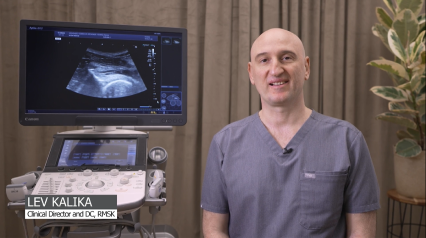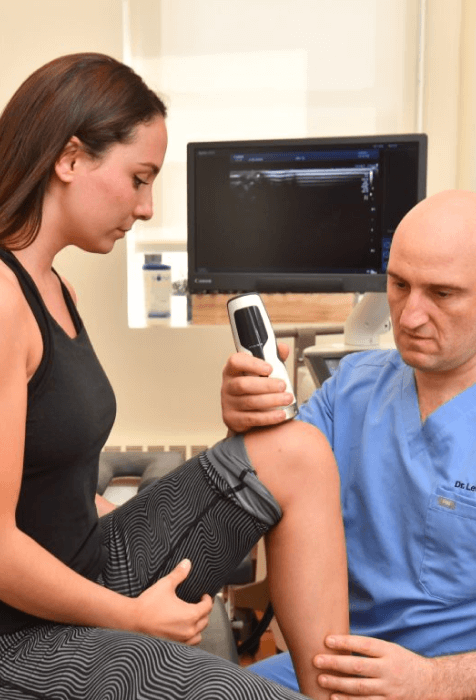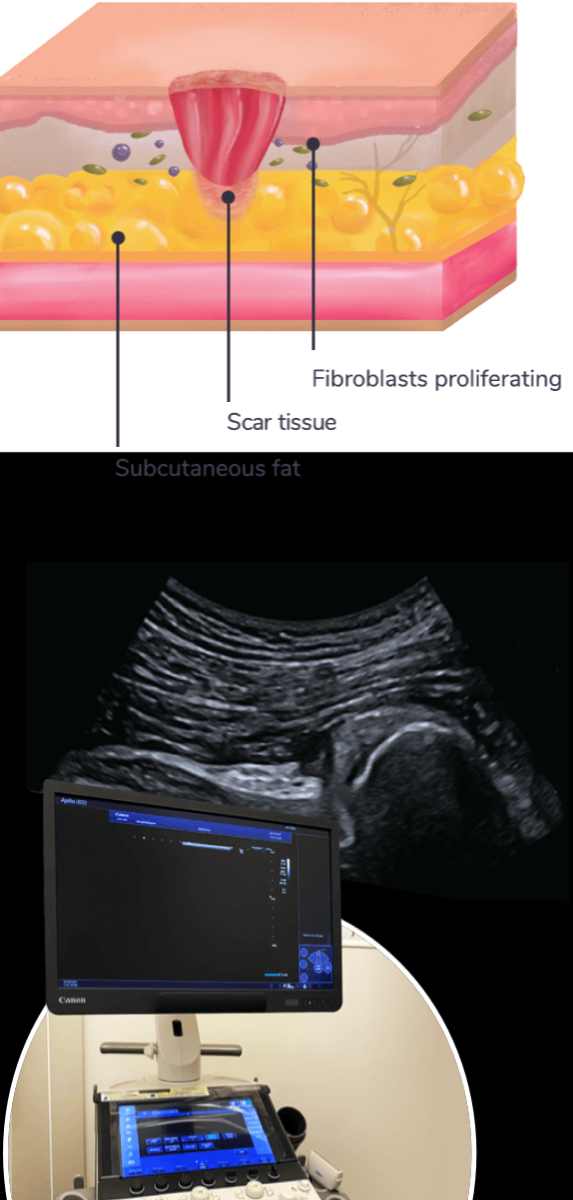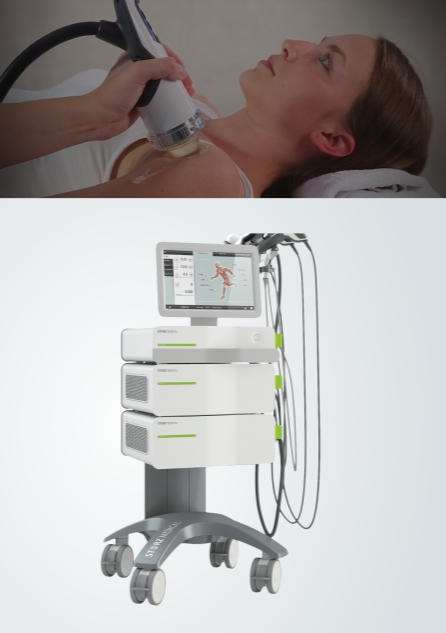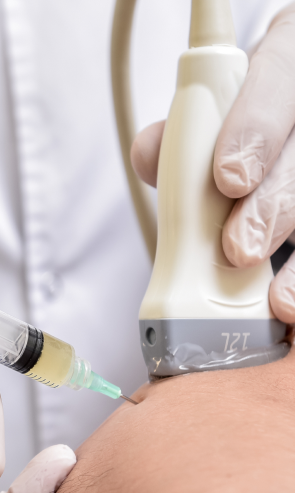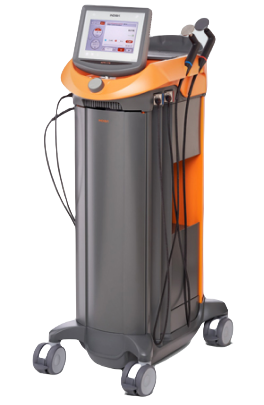We Use High Resolution Ultrasound to Diagnose Scar Tissue Fibrosis and Adhesions
The chosen treatment protocol for scar tissue is largely dependent on the location and maturity level of the tissue. For recent wounds in the early phases of healing, scar tissue is still pliable and can be remodeled. Mature scar tissue is more difficult to remodel and may require a more advanced and multimodal intervention strategy.
Scar tissue is formed in four progressive phases:
Phase 1: Inflammatory phase
This phase occurs immediately after trauma and lasts between 24-48 hours. It begins with blood clotting and the migration of macrophages and histiocytes to remove dead tissue from the damaged area. The injured area is normally immobilized during this phase to prevent further damage.
Phase 2: Granulation phase
In this phase, a temporary increase in vascularity occurs, to nourish the healing tissue. The rate of scar tissue formation correlates with tissue vascularity, with tendons and ligaments requiring more time than muscle. Some limited movement is helpful in this phase, to ensure that scar tissue is laid down in patterns that do not inhibit movement as it matures.
Phase 3: Fibroblastic phase
During phase 3, the number of fibroblasts and the rate of collagen production increases. Collagen binds to itself with weak hydrostatic bonds that make it pliable, allowing for the reshaping and molding of scar tissue with minimal risk of reinjury. This stage lasts 3 to 8 weeks.
Phase 4: Maturation phase
Collagen solidifies and shrinks during this final phase, and the tissue is able to tolerate stress without risk of reinjury. Significant tissue remodeling can still take place with appropriate mobilization. Failure to mobilize scar tissue in this phase can cause cross-linking of collagen fibers and tissue shrinkage. Toward the end of this phase, mature tissue loses its pliability and becomes more difficult to remodel.
At NYDNRehab, we use high resolution diagnostic ultrasound to visualize scar tissue in real time, to detect areas of abnormal collagen modeling and adhesions, and to identify areas where scar tissue restricts functional movement.


